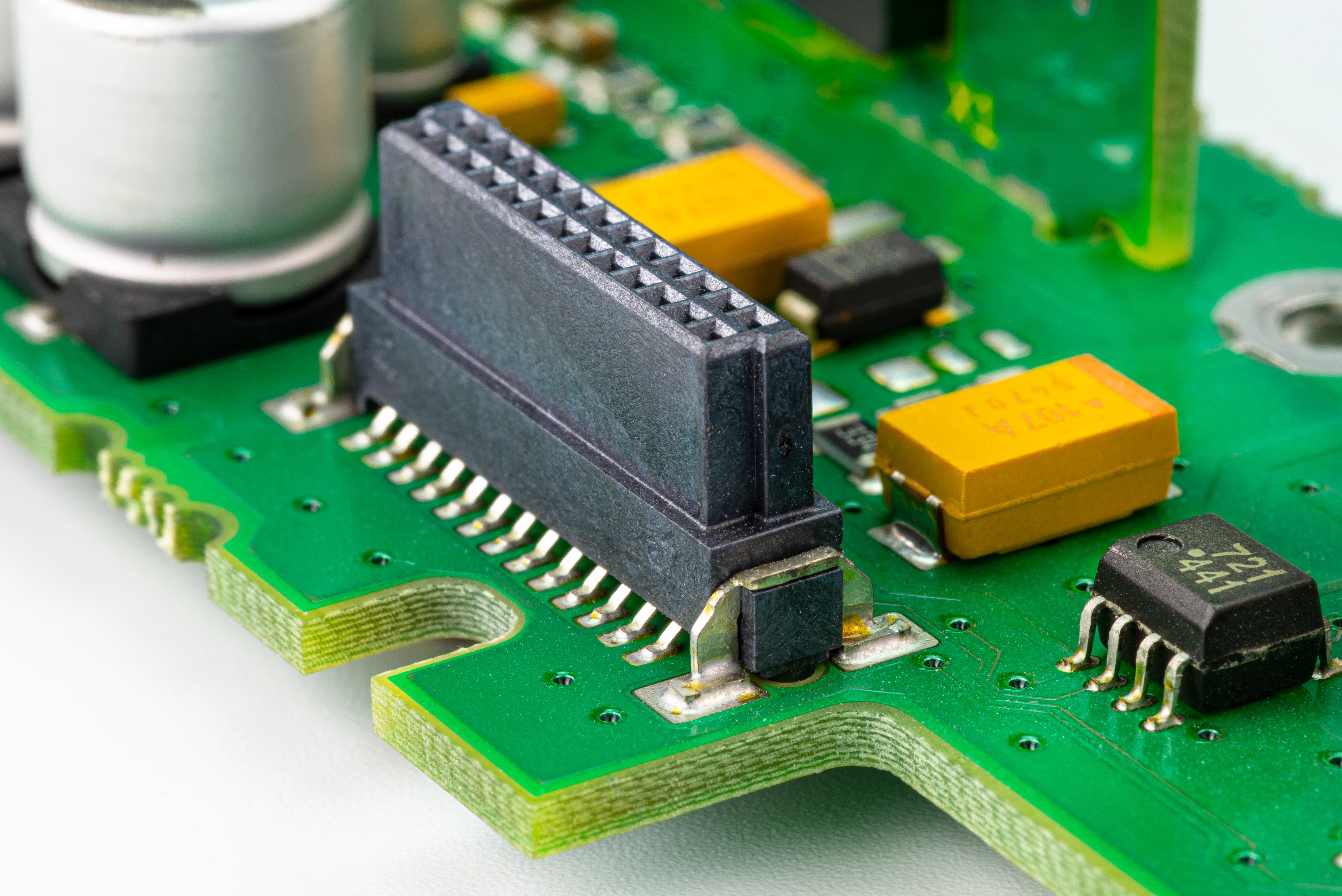2025 is shaking up PCB manufacturing like never before. Changes in global trade relationships force designers to adapt their supply and manufacturing chains to remain cost-competitive. While there’s much to digest in the evolving international trade environment, some things stay the same: one of the best counters for a market in flux is discovering or strengthening relationships with a contract manufacturer (CM) who has experience navigating supply chain complexities. VSE’s commitment to our clients as a partnership ensures a customized, high-level approach to solving your design challenges that accelerates turnaround times for critical time-to-market deadlines.
2025 PCB Cost Driving Factors: What to Know
General Tariffs
As the global trade war continues to escalate, designers who have historically relied on overseas manufacturing are beginning to feel the squeeze. What was once a clear-cut cost advantage is increasingly losing ground to that of domestic electronic manufacturing. Day-to-day operations of supply chain management are becoming more difficult to analyze. However, a US-based electronics contract manufacturer (CM) can streamline this process and avoid demand spikes for sub-products and raw materials that can lead to budget overruns later during production. VSE’s manufacturing engineers work hand-in-hand with the design team to verify design intent before procurement leverages a broad base of suppliers for competitive quoting and sourcing redundancy.
Chinese “De Minimis” Loophole Closure
One method overseas purchasers used to circumvent existing tariffs was to break down orders to fall below the $800 threshold for the small-order exception. Effectively, designers would trade slightly higher shipping costs and longer lead times to avoid the tariff. However, due to executive orders, de minimis exception officially ended in early May 2025.
Design teams that had relied on breaking up larger orders from Chinese manufacturers as part of their supply chain must now find alternative overseas manufacturers or bring production stateside. The additional time required to identify and verify international manufacturers could significantly delay your production schedules. Instead, partnering with a domestic manufacturer like VSE could reduce international turnaround times by more than half while ensuring high quality and a manufacturing partner who simplifies supply chain management from design review through lifecycle management.
Traditional Cost-Driving Factors
Manufacturing Complexity
The thicker the board, the greater the material and processing costs. Four-layer boards are an unofficial design standard due to their sweet spot of cost and design complexity. It’s helpful to understand the general process of etch-and-lamination, whereby fabricators translate the copper designs from ECAD data using acid etchant baths and fuse the discrete cores/prepreg materials into a unified sub-product. While etching is a parallel process (it’s possible to etch multiple cores simultaneously), lamination is sequential. A single lamination step is sufficient for some designs – through-hole drilling requires only one pass. However, more complex via structures (e.g., blind and buried microvias) require sequential lamination that drills the appropriate layers first before combining the disparate sub-laminations.
These fabrication examples are all cost adders over “basic” work orders. While they may be necessary for complex designs, a design review may be able to limit extraneous or downright unnecessary fabrication processes. Think of it like a “measure twice, cut once” idea: upfront design review between the client and manufacturing engineer can limit these elements, reducing per-board manufacturing costs.
Precision
In general, manufacturing has to navigate the ambiguity of interpreting design documents, while designers want to avoid over constraints. Designers should begin by recognizing the IPC class of their layout: general consumer electronics are class 1, dedicated service electronics are class 2, and high-reliability electronics are class 3. These classes represent intensified quality and reliability requirements due to the risk of field failure. Designing a class 1 device to class 3 standards does little for the performance, and the reliability of these devices is less critical due to their rapid obsolescence.
Cost-Prohibitive Manufacturing Tolerances
| Annular rings | Below 6 mils, annular rings can be more prone to breakout (hole perimeter extends beyond pad dimensions), affecting the circuit’s current-carrying capacity and overall reliability, causing board rejection during inspection. |
| Outline dimensions | Below 4 mils, board fabricators will expend smaller, expensive drill bits more rapidly. Keeping the outline simple with straight-line corners can reduce this cost driver even further with V-scoring. |
| Trace width/spacing | Thinner trace widths and gaps are necessary for dense pinout breakout but require specialized processes and equipment. Unless necessary, avoid trace width/spacing below 4 mils. |
| Hole size | Like with the board outline, smaller hole sizes mean smaller drill bits that wear out faster. Additionally, hole size tolerance can increase rejection rates. Hole size precision of or less than 2 mils can be overly restrictive. |
| Aspect ratio | Vias and other through-holes must balance hole diameter against depth: the smaller the diameter, the more likely it is to encounter mechanical failure or plating irregularities that ultimately lead to board scrappage. Holes shouldn’t exceed a 10:1 depth-to-diameter ratio. Microvias are a solution for smaller holes that take less board real estate. |
| Impedance | Controlled impedance lines are necessary in modern electronics to meet the needs of various transmission protocols. Impedance tolerances stricter than 10% may limit manufacturing partners. Poor compatibility between trace requirements and materials can further complicate costs. |
Soft Costs
One of the best ways to reduce soft costs in PCB manufacturing is by using an early design review that can identify any potential design for manufacturing (DFM) or supply chain issues. VSE works alongside design teams to address these issues upfront expeditiously, ensuring all aspects of production proceed smoothly. VSE’s lean manufacturing approach ensures rapid implementation of changes and all corresponding design documentation to keep production in lock-step.
Communicating Design Intent
| Underspecified | Overspecified |
|
|
The Benefits of an Experienced Contract Manufacturer
Understanding the link between 2025 PCB cost-driving factors and quality is imperative. The old motto goes, “Do it right, or do it twice (or sometimes more).” While profitability is essential for project success, elevating it above performance and reliability needs can hamper the brand or company image. Poor manufacturing outcomes result in scrap or rework – unnecessary cost adders – and jeopardize ship dates. Partnering with an experienced US-based CM like VSE can get ahead of these issues while offering additional incentives overseas manufacturers may not be able to match:
- Government projects – Not all design work, namely defense and aerospace, can go overseas. While some jobs may be more suitable for overseas manufacturing, there’s value in working with known and trusted manufacturers.
- Touring – Before entering into production, it’s worthwhile to establish a deeper relationship with a manufacturing partner. Touring a local, US-based PCB manufacturer allows design teams to see quality first-hand and allay any questions or concerns.
- Timeliness – Not only is shipping faster domestically, but a greater overlap of working hours makes it easier to communicate revision changes or updates.
Your Contract Manufacturer for 2025 and Beyond
2025 PCB cost-driving factors are experiencing high uncertainty with the growing trade war. Still, designers can look toward a local manufacturer to simplify logistics while improving quality and turnaround times. At VSE, our engineers are committed to building electronics for our customers, including a full design review before manufacturing to minimize per-board costs. More importantly, we recognize the value of partnership with our designers: through coordinated efforts, VSE helps guide design teams through a confusing supply chain to get their products to market faster and without interruptions.





